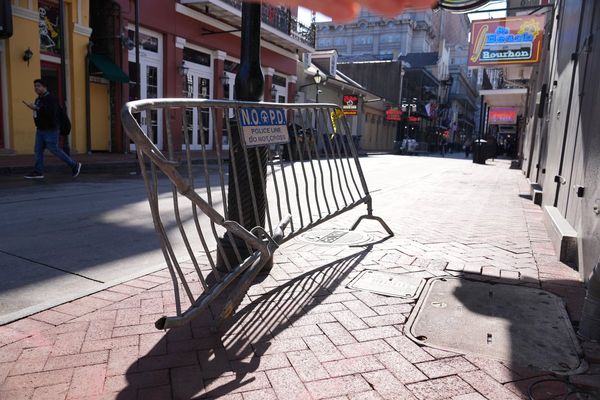
The Queen was tending roses when she spoke to American tourists (Adrian Dennis/PA)
(Picture: PA Archive)The United Kingdom woke on Friday to absorb news of the death of Queen Elizabeth II, after the 96-year-old monarch died peacefully at Balmoral.
Mourners from around the world, in their thousands, are gathering at Buckingham Palace, Windsor and Sandringham House in an outpouring of public emotion.
People are laying flowers and lighting candles, paying their respects and sharing their personal memories of the longest reigning monarch in British history.
Church bells rang out across England, Scotland, Northern Ireland and Wales.
The King’s Troop Royal Horse Artillery led a Death Gun Salute from Hyde Park, with cannon from all four corners of the UK firing a total of 96 tribute rounds.
The nation is due to be addressed by the new head of state, King Charles III.
The King and Camilla, who is now the Queen Consort, stayed at Balmoral on Thursday night before returning to Buckingham Palace on Friday, when the couple were greeted by the crowds.
Charles also met with the new Prime Minister, Liz Truss for the first time since his mother’s death.
It comes as members of parliament paid tribute to Queen Elizabeth II in an all-day sitting in the House of Commons. -
A period of national mourning, likely to be up to 13 days, is due to be confirmed by the government ahead of the Queen’s funeral, with preparations being made under a protocol codenamed Operation London Bridge.
Respects to the Queen have also been marked at landmarks and events around the world, including the Empire State Building in New York illuminated after sunset in purple and silver to “honour the life and legacy of Her Majesty”
The Leader’s joined for analysis and reflection by Evening Standard royal editor Robert Jobson, Sarah Richardson, professor British history at the University of Warwick, and Dr Jonathan Spangler, a senior lecturer in history at Manchester Metropolitan University.
Listen here or here:







